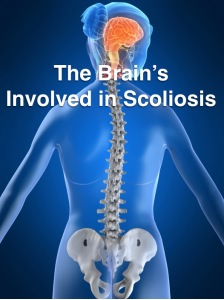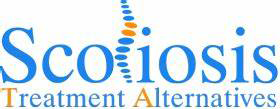
Study Shows Brain Involved in Curve
Research studies on scoliosis over the past several years has focused on involvement of the brain in scoliosis curvatures. Thus, scoliosis may be all in your head.
A preliminary research study on brain function and muscular control in scoliosis revealed that the muscles on the inside of the scoliosis curvature were controlled by the motor cortex in the brain on the opposite side. In other words, the muscles on the left or concave side of a right thoracic scoliosis are controlled by the right motor cortex.
This is significant as the muscles on the inside of a scoliosis curvature are found to be shortened and weakened due to an increase in muscle tone.
Tone and Strength are Different
While most people tend to think of increased muscle tone as increased muscle strength, this simply isn’t the case. The two are distinctly different. The real muscle tone pertains to the muscle’s innate ability to react to a certain degree of stretch.
Muscle tone refers to a muscle’s ability to react to a stretch, which occurs primarily at an unconscious level.
Muscle strength is the ability of a muscle to contract. It can occur at both a conscious and unconscious level. A muscle has the greatest ability to full contact at it’s resting length. If a muscle is fully shortened or fully lengthened it’s fibers cannot contract optimally. The closer to the end range the lesser the ability to contract.
Muscle Tone vs Muscle Strength in Scoliosis
In idiopathic scoliosis the muscles on the inside (concave) side of the curvature are found to be flattened compared to the muscle on the outside (convex) side. This is due to the muscles on the inside of the curvature are shortened, weakened due to an increase in their muscular tone. That is why when you stretch these muscles they come to tension very early in the stretch.
Brain Involvement in Idiopathic Scoliosis
A study on hyper tone in scoliosis and brain involvement published in the European Spine Journal in 2010 showed the when a person with idiopathic scoliosis had the inhibition centers in their brain stimulated on the side opposite of thoracic concavity the tone in the muscles was significantly reduced for a short period of time.
Realizing that the brain is involved in scoliosis would indicate that the key to restoring proper function in the muscles of the back to help reduce a scoliosis curvature would be to train the brain how to lengthen and strengthen the shortened and weakened muscles on the inside.
This can be done initially through conscious efforts, like those found in the Schroth Method but ultimately, it will require unconscious stimulation of the control centers for muscle tone to make the conscious changes in increase strength more permanent.
This is the realm that Nu-Schroth helps develop. Through specific neuromusculoskeletal therapies we can stimulate the portions of the brain involved in scoliosis to reduce the tone and allow for the muscles to return to a more normal resting length which is allows for it to maximally strengthen when exercised.

